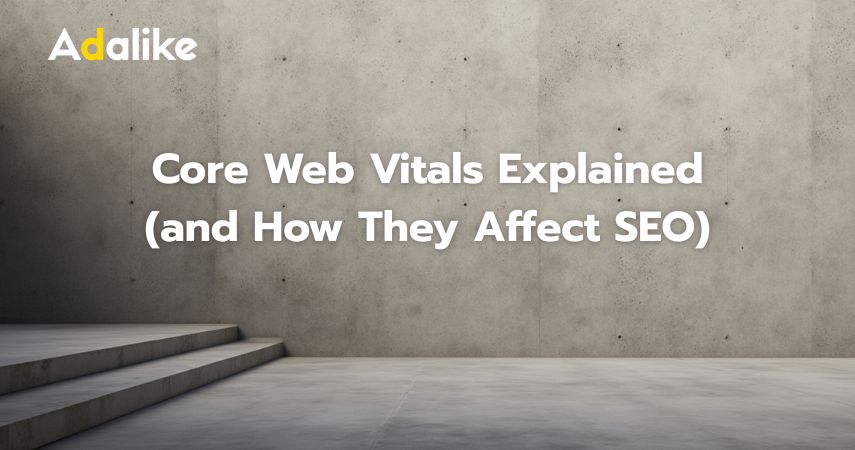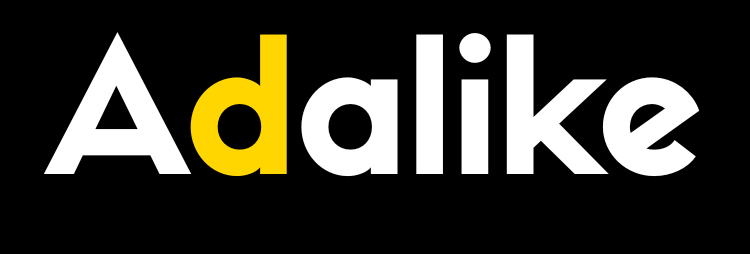Core Web Vitals Explained (and How They Affect SEO)

If you care about SEO and want your website to rank well in Google, you’ve probably heard about Core Web Vitals. They are not just another buzzword – they are an official Google ranking factor and directly impact your user experience. In this guide, we’ll break down what Core Web Vitals are, why they matter, and how to improve them to get better rankings and happier visitors.
What Are Core Web Vitals?
Core Web Vitals are a set of three specific performance metrics that Google uses to measure real-world user experience on a website. These metrics focus on three key areas:
- Loading performance – how quickly your main content becomes visible
- Interactivity – how fast your site responds to a user’s actions
- Visual stability – how stable the layout is while the page loads
Google collects this data from actual Chrome users through the Chrome User Experience Report (CrUX). This means it’s based on real devices and real network conditions — not just lab tests.
The Three Core Web Vitals Metrics
1. Largest Contentful Paint (LCP)
Largest Contentful Paint measures how long it takes for the largest piece of content (like a hero image, heading, or video) to appear on the screen. Google recommends an LCP of 2.5 seconds or faster.
Why It Matters: If your main content takes too long to appear, users may leave before they even see it. This directly affects bounce rate and overall engagement.
How to Improve LCP:
- Optimize and compress large images
- Use a fast hosting provider or CDN
- Preload important fonts and hero images
- Minimize render-blocking CSS and JavaScript
2. First Input Delay (FID)
First Input Delay measures how quickly your site responds when a user first interacts (clicks, taps, or presses a key). Google recommends an FID of less than 100 milliseconds.
Why It Matters: A website that feels slow or unresponsive creates frustration. This metric is about making sure users can interact as soon as they try to.
How to Improve FID:
- Reduce heavy JavaScript execution
- Use code splitting to load only what’s needed
- Defer non-essential scripts
- Use browser caching effectively
3. Cumulative Layout Shift (CLS)
Cumulative Layout Shift measures how visually stable your page is while it loads. Ever click a button and it suddenly moves, causing you to click the wrong thing? That’s a bad CLS score. Google recommends a CLS score of less than 0.1.
How to Improve CLS:
- Always include width and height attributes for images
- Reserve space for ads, embeds, and iframes
- Avoid inserting content above existing content after load
- Use CSS transforms for animations instead of properties that trigger layout shifts
Why Core Web Vitals Matter for SEO
Since June 2021, Core Web Vitals have been a confirmed part of Google’s ranking algorithm as part of the Page Experience Update. A good score won’t magically shoot you to #1, but it can make a difference when competing with sites of similar content quality.
Here’s how they impact SEO:
- Better User Experience: Sites that load fast and feel smooth keep visitors longer, lowering bounce rates.
- Improved Rankings: Google favors websites that deliver a great experience on both desktop and mobile.
- Higher Conversions: Faster sites convert better — which means more leads and sales.
How to Measure Your Core Web Vitals
You can measure Core Web Vitals using free tools:
- Google PageSpeed Insights: Enter your URL to see lab and field data.
- Google Search Console: Check the “Experience → Core Web Vitals” report for site-wide issues.
- Lighthouse in Chrome DevTools: Run a local audit on any page.
- WebPageTest: Get a detailed performance breakdown.
Best Practices to Improve All Three Metrics
Improving Core Web Vitals often comes down to good web performance optimization. Here are some universal tips:
- Use a reliable hosting provider with low server response times
- Implement a CDN to serve content faster worldwide
- Lazy-load images and videos below the fold
- Minify and compress CSS, JS, and HTML
- Use modern image formats like WebP or AVIF
- Keep third-party scripts (ads, widgets, trackers) to a minimum
Common Mistakes to Avoid
- Using too many large images without compression
- Loading unnecessary scripts and plugins
- Ignoring mobile performance
- Not monitoring your site regularly for speed drops
Key Takeaways
Core Web Vitals are no longer optional — they are a key part of modern SEO and user experience. By focusing on LCP, FID, and CLS, you not only improve your Google rankings but also make your website faster, smoother, and more trustworthy for visitors.
Advanced Tips for Core Web Vitals Optimization
If you’ve already handled the basics, there are more advanced optimizations you can make to squeeze every millisecond of performance out of your website and maximize your Core Web Vitals scores.
1. Use Critical CSS
Instead of loading all your CSS at once, extract and inline only the CSS needed for above-the-fold content. This allows your page to render faster while the rest of the styles load in the background.
2. Implement Server-Side Rendering (SSR) or Static Site Generation
If you are using a JavaScript-heavy site (React, Vue, Next.js), SSR or pre-rendering can drastically reduce Largest Contentful Paint times by sending a ready-to-render HTML page to the browser.
3. Prioritize Fonts
Fonts can block rendering if they are not optimized. Preload your most important font files and use font-display: swap so text appears immediately with a fallback font before the custom font loads.
4. Minimize Main Thread Work
Use the Chrome DevTools Performance tab to see which tasks are blocking the main thread. Break up long tasks into smaller chunks, and defer work that is not essential for the first paint.
5. Optimize Third-Party Scripts
Audit your site for unnecessary scripts — ad networks, analytics, widgets — and remove what you don’t need. Host critical scripts locally when possible to avoid slow third-party servers.
Real-World Examples of Core Web Vitals Impact
Several case studies have shown how improving Core Web Vitals can have a measurable business impact:
- Walmart: Found that for every 1 second of performance improvement, conversions increased by 2%.
- Vodafone: Improved LCP by 31% and saw an 8% increase in sales.
- BBC: Reported that losing just 1 second of load time caused 10% of users to leave.
These examples show that performance is not just a technical metric — it directly affects your bottom line.
Core Web Vitals and Mobile Optimization
With Google’s mobile-first indexing, your mobile Core Web Vitals matter more than your desktop scores. Mobile users often have slower connections and less powerful devices, so optimizing for them is critical.
- Use responsive images: Serve appropriately sized images for different screen sizes.
- Reduce mobile payload: Minify and combine assets to lower the total KB downloaded.
- Test on 3G or 4G throttling: See how your site performs on slower connections.
- Optimize tap targets: Make sure buttons and links are large enough and not too close together.
Core Web Vitals Checklist
Before launching a new website or redesign, run through this quick checklist:
- ✔ LCP under 2.5s
- ✔ FID under 100ms
- ✔ CLS under 0.1
- ✔ Images compressed and properly sized
- ✔ Fonts preloaded and using swap
- ✔ Minimal render-blocking CSS/JS
- ✔ Tested on real devices and mobile networks
Next Steps
Improving Core Web Vitals is not a one-time task. As you add new content, plugins, or features, keep monitoring your metrics. Regularly review your Search Console Core Web Vitals report to ensure your site continues to provide a fast, smooth experience for every visitor.
Start by measuring your scores with Google’s free tools, fix the biggest issues first, and keep monitoring. Over time, you’ll see better engagement, higher rankings, and more conversions.







